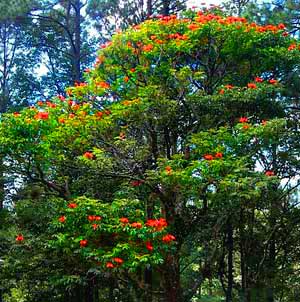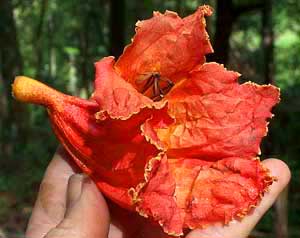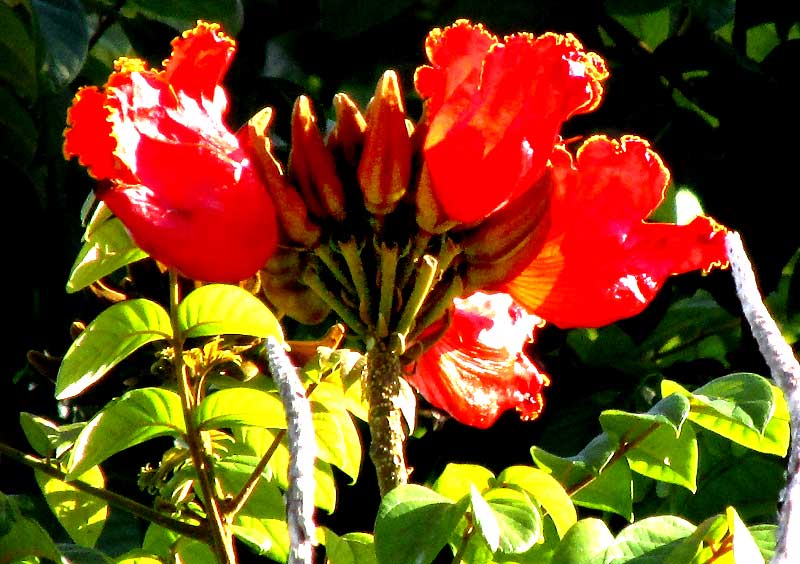Excerpts from Jim Conrad's
Naturalist Newsletter
from the December 3, 2007 Newsletter issued from Yerba Buena Clinic just outside Pueblo Nuevo Solistahuacan, Chiapas, MÉXICO
about 1740 meters in elevation, ± LAT. 17° 11' 27"N, LONG. -92° 53' 35"W
AFRICAN TULIP TREES FLOWERING
All through the tropics right now, especially in parks and along streets, there's a tree with dark green leaves and large, red blossoms so showy that, even in a land of many gorgeously flowering trees, your eyes gladden just to see it. Below, you can behold one of ours.

That's the African Tulip Tree, SPATHODEA CAMPANULATA, and it's really from Africa, but planted worldwide in the tropics because of its beauty. Of course having a worldwide distribution it's known by many names. Another English name is Santo Domingo Mahogany, though it's not related to real Mahogany at all, being in a completely different family, the Bignonia Family.
In Spanish sometimes it's called "Flor de Fuente," or "Fountain Flower," because the four-inch-long blossoms curve into a cup that can hold water for visiting birds and insects. Below, you can see a blossom in my hand.

Besides its beauty, the tree is often planted because it's fast-growing and can be reproduced from seeds, root suckers or cuttings. One problem with the tree is that its branches are brittle, thus very susceptible to wind injury.
Issued on December 5, 2019 from Tepakán, Yucatán, MÉXICO
FLOWER CLUSTERS
In Tepakán here and there you see relatively large, dark-green trees bearing clusters of the gorgeous saucer-size blossoms shown below.

This is one of the tropic's most spectacular ornamental trees. It's a member of the mostly tropical Bignonia Family (not Begonia), along with the north's Trumpet Creeper vines, which bear flowers of a similar color, and similarly pinnately compound leaves.